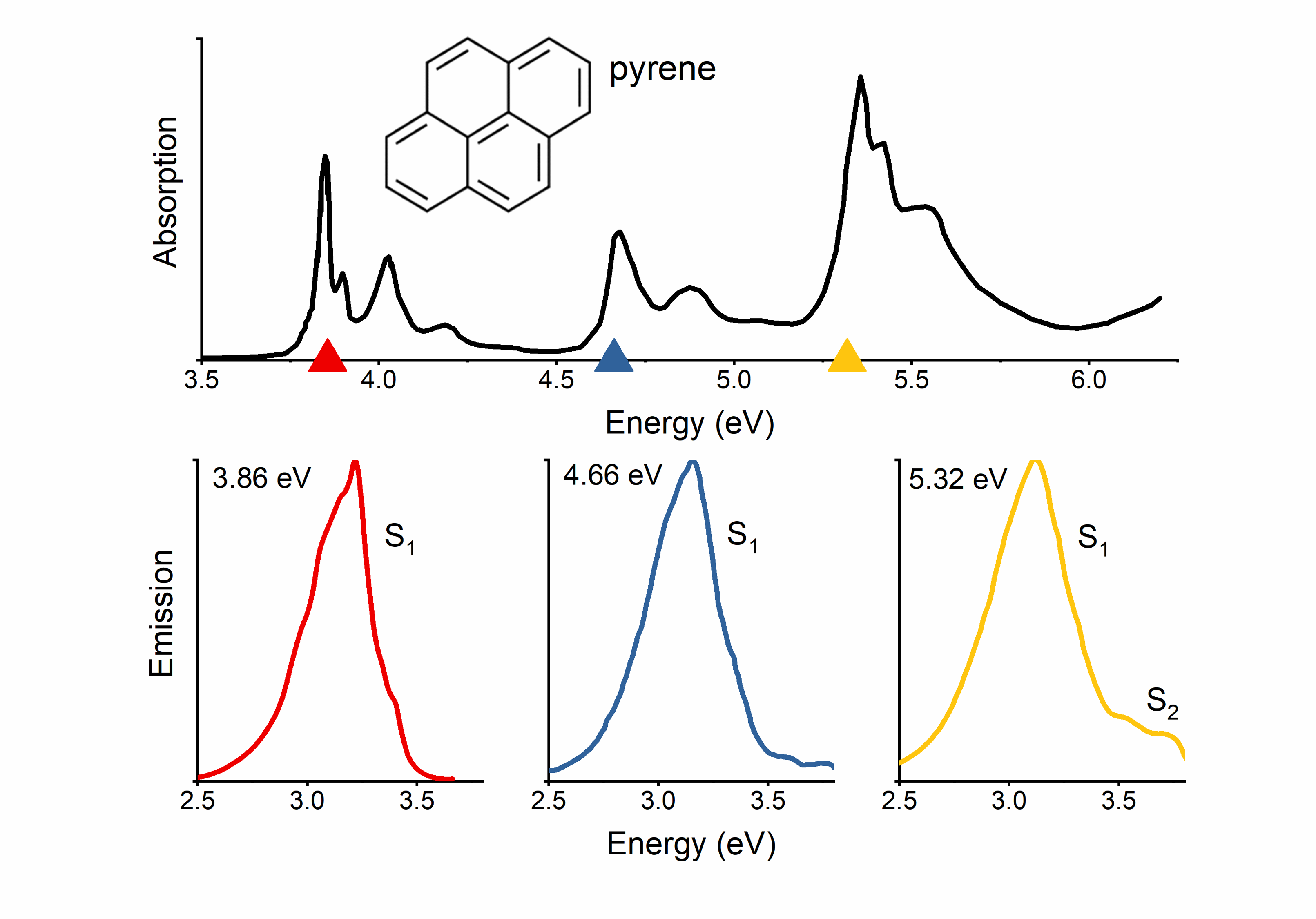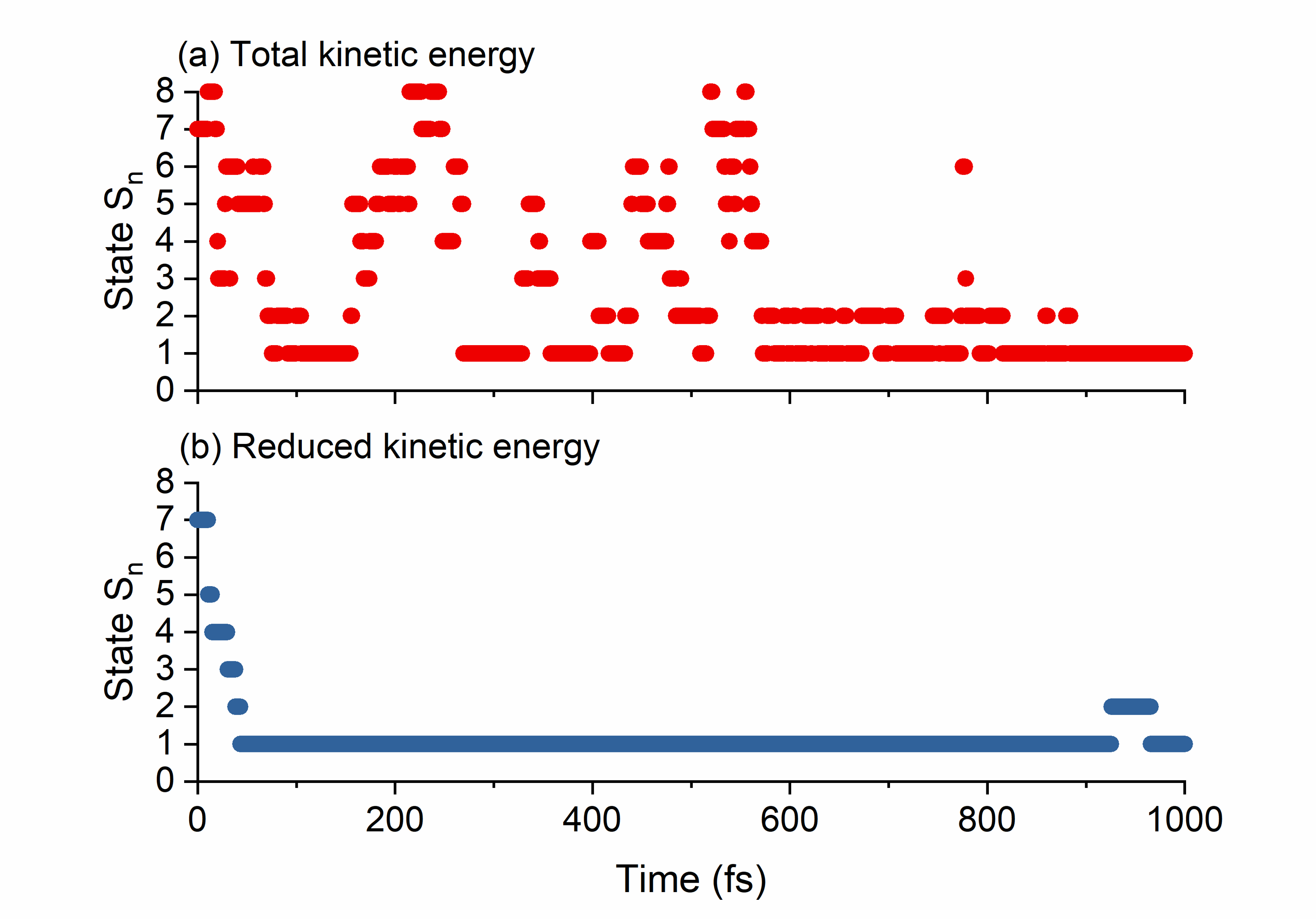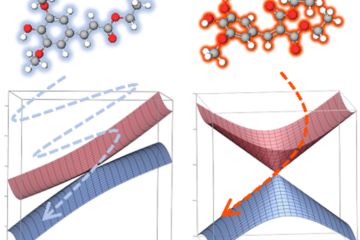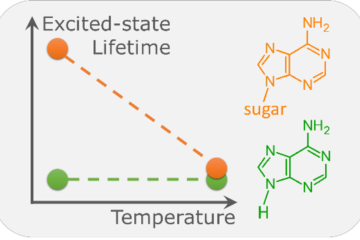Simulation confirms pyrene spectral shoulder is from non-Kasha emission.
In brief:
- The non-Kasha nature of the spectral shoulder in the fluorescence of pyrene has been under debate.
- We employ two methodologies to simulate pyrene fluorescence and confirm the should is due to S2 emission.
- The simulations also show a dynamic equilibrium, with a hot S1 minimum transferring population to S2.
Pyrene fluorescence after a high-energy electronic excitation exhibits a prominent band shoulder not present after excitation at low energies. The standard assignment of this shoulder as a non-Kasha emission from the second-excited state (S2) has been recently questioned.

After low- and medium-energy excitation, pyrene has a single fluorescence band. However, after high-energy excitation, a shoulder appears. Is it due to non-Kasha emissions?
To elucidate if non-Kasha emission actually happens in pyrene, we simulated its fluorescence using two different theoretical approaches:
- Vertical convolution;
- Nonadiabatic dynamics with nuclear ensemble approaches.
Both approaches are new, and we show step-by-step how they are done.
The first approach requires only stationary structures for the excited states. Nevertheless, it needs the vibrational temperature of the excited state, a concept that’s not routine in computational chemistry.
The second approach requires nonadiabatic dynamics simulations with high-lying electronic states. However, because pyrene fluorescence occurs within about 100 ns, we needed to develop a protocol to explore the ergodicity of much shorter dynamics.
All our simulations were done with ADC(2). Dynamics used surface hopping. Another methodological challenge was the size extensivity errors in the back-hopping evaluation. This is an artifact coming from the velocity adjustment in the momentum direction after hopping, which is usually done when coupling vectors are not available.
These errors led to entirely wrong dynamics, and we proposed a way to fix it.

Size-extensivity errors in surface hopping caused by velocity adjustment in the momentum direction lead to the wrong dynamics, with an artificial excess of back shopping (top). We proposed a way to fix this problem, reducing the amount of kinetic energy available for back hopping. After correction, trajectories are well-behaved (bottom).
The results from both simulation approaches confirm that the band shoulder is, in fact, due to S2 emission.
We show that the non-Kasha behavior is a dynamic-equilibrium effect, not caused by a metastable S2 minimum. However, it requires considerable vibrational energy, which can only be achieved in collisionless regimes after transitions into highly excited states. This strict condition explains why the S2 emission was not observed in some experiments.
MB
Reference
[1] G. Braun, I. Borges Jr, A. Aquino, H. Lischka, F. Plasser, S. A. do Monte, E. Ventura, S. Mukherjee, M. Barbatti. Non-Kasha fluorescence of pyrene emerges from a dynamic equilibrium between excited states, J. Chem. Phys. 157, 154305 (2022). DOI: 10.1063/5.0113908



0 Comments